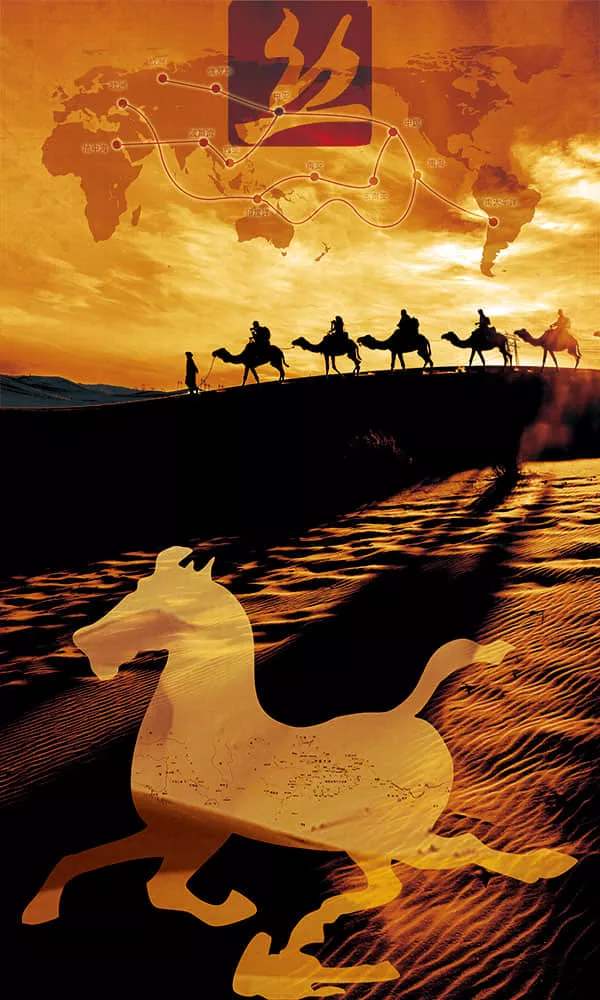The Silk Road is a business and trade route liking Asia, Africa and Europe and starting from the ancient capital Chang’an (today’s Xi’an), the political, economic and cultural center of ancient China. It reaches the Xinjiang Uygur Autonomous Region through Longshan Mountain, Hexi Corridor, Yumen Pass and Yangguan Pass as well as reaches Africa and Europe through Pamirs Plateau, Middle Asia, Western Asia and North Africa. It’s a main road for economic, political and cultural communication between the East and the West. The initial purpose of the Silk Road was to transport silk produced in ancient China.
The Silk Road usually refers to the business route in the north part of the Eurasian continent with the Ancient Tea Horse Road in the south as a counterpart. A long time had been spent to form the road. Zhang Qian, an official of Emperor Wu in the Western Han Dynasty, found the route first. Ban Chao, an official of Eastern Han Dynasty, made the route available and extended it. Roman conquered Seleucid Empire in Syria and Ptolemaic Dynasty in Egypt, then go through Parthian Empire, Kushan Empire and Aksumite Empire to trade with China for silk. The Silk Road first established by Zhang Qian was called “the journey to chisel through”. At the end of the Western Han Dynasty, the Silk Road was no longer used because of the invasion of Xiongnu, an ancient nationality in China. 73 AD, Ban Chao made his way into the Western Regions and restored the route after it’s being obsolete for 58 years. And this time the route reached Roman Empire in Europe. Roman Empire also went to Luoyang city in the Eastern Han Dynasty through the route. This was not only the first communication between China and Europe, but also the complete Silk Road in the early period of the 21st century. Silk from China was the most representative goods among the cargo along the long route, which was also why it was named as the Silk Road. Apart from being a business and trade road connecting Asia and Europe in ancient time, the road was also a way of friendship supporting friendly communication between China and different countries in Asia and Europe as well as developing friendship between the east and the west. Some famous historical people were connected to the Silk Road, like Zhang Qian going to the Western Region to accomplish his mission given by the government, and Ban Chao who changed his career from civil service to military officer, the government in the Yongping period of the Eastern Han Dynasty to introduce Buddhism to China and Xuanzang learning Buddhism in India.
Ever since Zhang Qian made his way to the Western Region, the business exchanges with Europe and Middle Asia increased significantly. The road linking Asia and Europe helped businessmen to transport silk fabrics to the Middle Asia and Europe. That’s why people from Greece and Roman called China the Kingdom of silk. Silk Road is a general name given to all routes connecting the east and the west, starting from East Asia, passing through Middle East and West Asia and linking Europe and North Africa. The Silk Road has been significant in the world history because it’s a transportation artery of Eurasian continent and a bridge for main cultures in China, India and Greece.
